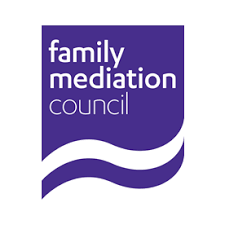Understanding the No Fault Divorce process
In a significant development for couples navigating the difficult terrain of divorce, the United Kingdom introduced a fault-free or no-fault divorce process in 2020, which signalled a transformative shift in family law. This blog aims to demystify this welcome change for those exploring divorce options a few years on, exploring the key elements of the fault-free divorce process in the UK and the impact it has on individuals seeking to dissolve their marriages with greater simplicity and compassion.
The Historical Context
Traditionally, divorce in the UK required individuals to establish fault-based grounds such as adultery or unreasonable behaviour, or endure a prolonged separation period of two or five years. This often led to acrimonious and contested divorces, putting additional strain on already strained relationships.
The No Fault Divorce Process:
1. Introduction of the "No-Fault" Ground: The fault-free divorce process, implemented by the Divorce, Dissolution and Separation Act 2020, introduced a fundamental change by eliminating the need for fault-based grounds. The centrepiece of the reform was the introduction of a single ground for divorce: the irretrievable breakdown of the marriage.
2. Removal of the Blame Game: In the no fault divorce process, couples no longer need to assign blame or prove misconduct. The focus shifts from establishing fault, to acknowledging that the marriage has irretrievably broken down.
3. The 26-Week Minimum Period: While the new process removes the need to establish fault, it introduces a minimum timeframe of 26 weeks/ approximately six months between the start of proceedings and the granting of the divorce. This period allows couples to reflect on their decision and potentially reconcile. (It takes a minimum of 20 weeks now to reach the conditional order stage and then a further 6 weeks between the conditional order and final order).
4. Joint Applications and Simplified Paperwork: The fault-free divorce process encourages joint applications, where both parties can acknowledge the breakdown of the marriage. The paperwork has been streamlined to make the process more accessible and less burdensome.
5.Protecting the Interests of Children: The new process places a greater emphasis on the interests of any children involved. Courts are required to ensure that arrangements for children have been considered and are in place before granting the divorce.
Impact on Individuals and Families:
1. Reduced Emotional Strain: By eliminating the need to assign blame, the no fault divorce process reduces emotional strain on both parties. It encourages a more amicable and less confrontational approach to the dissolution of marriage.
2. Promoting Amicable Resolutions: Couples are more likely to pursue amicable resolutions under the fault-free process. This can contribute to healthier post-divorce relationships, especially important when co-parenting is involved.
3. Quicker and Cost-Effective: The simplified paperwork and focus on joint applications streamline the process, making fault-free divorces generally quicker and more cost-effective. This benefits both individuals and the legal system by reducing the burden of contested proceedings.
4. Greater Autonomy and Control: The fault-free divorce process empowers couples to take greater control of their own divorce journey. It provides the autonomy to make decisions that suit their unique circumstances, fostering a sense of control during a challenging time.
The introduction of the no fault divorce process in the UK marks a significant milestone in family law. By prioritising the irretrievable breakdown of the marriage over the assignment of blame, the reform sought to create a more compassionate and efficient approach to divorce, and has been very successful. As individuals and families navigate the complexities of ending a marriage, the fault-free process has acted as a beacon of change, promoting understanding, collaboration, and a more harmonious transition to a new chapter in their lives.
To find out more about how Latitude Mediation can support you after you have made the decision to move forwards, get in touch here or email info@latitudemediation.co.uk.





















